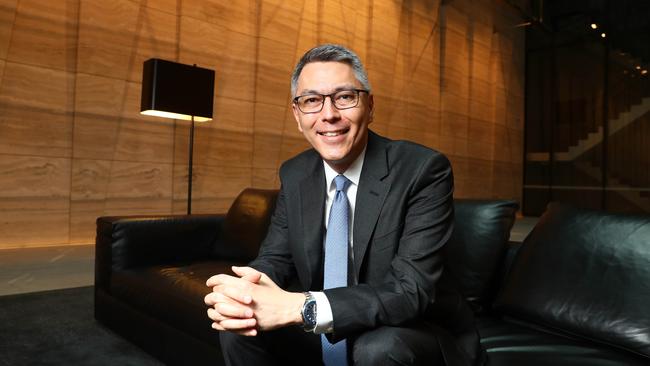
The clear differences between BHP now and then arguably make Mike Henry’s decision to recruit CSL chief financial officer David Lamont to fill the role even more surprising.
The early pitch to shareholders from the new BHP boss was that his leadership of the world’s biggest miner would be, essentially, more of the same, only faster.
The focus on operational performance would remain, but sharper and paired with a reshaped emphasis on innovation in the search for the next wave of productivity gains through technology and data.
The expectation was that Henry would seek to achieve that with the team already in place at BHP — some would depart, obviously, but the group that has worked so hard over the last five years to transform the company would largely remain intact to continue the work.
Henry’s progress in installing his own executive leadership team and putting his own stamp on BHP has been badly interrupted by the coronavirus crisis, and the shape of his strategy for the company is not yet clear.
Stealing a key executive from Australia’s most successful biotechnology company is a step towards building a greater culture of innovation and accelerating BHP’s adoption of new technology, Henry believes, with Lamont also offering a valuable set of external eyes on the work of its established management group.
Lamont’s experience in smaller companies, arguably more flexible and nimble than BHP, could also be seen as a valuable skill set.
But whether the appointment is a herald of a more sweeping revolution within BHP’s management ranks is not yet clear. A key insight will come when Henry decides whether his new CFO also keeps Beaven’s role as head of strategy and business development.
Wednesday’s announcement made no mention of that role, and for now the message to the Beaven’s strategy team is that his whole portfolio will be handed over to Lamont in December.
But handing the job of developing BHP’s future strategy to a relative outsider would indicate Henry plans a more significant reshape of its direction than his tenure has so far suggested.
There is no doubt Lamont will inherit a balance sheet in far better shape than Chip Goodyear did in 1999, however.
After the spin-out of BHP’s lesser assets into South32, Beaven contributed as much as anyone else to slimming down BHP’s boomtime bloat into a far leaner and more focused operation.
But it is also perhaps an oddity that his biggest contribution to BHP’s current good financial health is one that, on the face of it, runs contrary to market demands for greater shareholder returns.
It didn’t rate a mention in Mike Henry’s public praise of the outgoing BHP finance boss on Wednesday, but the critical decision that led to BHP’s rude financial health was surely the 2016 decision to abandon BHP’s progressive dividend policy — a mandate that each half-yearly payout be greater than the last.
For years it was a centrepiece of BHP’s “contract” with shareholders. But by 2015, when commodity prices were crumbling, the policy was a millstone around BHP’s neck.
Before the change to a simple minimum payout of 50 per cent of underlying profit, the need to feed the dividend beast coloured too much of BHP’s decision-making.
Ditching the need to provide for an ever-increasing dividend, before all else, was the critical lever that gave Beaven the flexibility reshape the rest of its spending on growth, debt repayments and shareholder returns.
While they remain substantial, all of Beaven’s other achievements at BHP — the success of its much-vaunted capital allocation framework, almost halving its capital spending, reducing net debt by $US17bn over the last five years, record returns to shareholders on the back of asset sales and strong operational performances — fundamentally flow from the herculean effort to convince BHP’s board that a cyclic industry demands a more flexible dividend policy.
Lamont inherits both a company in good health, and a big set of shoes to fill.






The last time BHP looked outside its own ranks to appoint a new finance boss was in 1999, when Paul Anderson tapped Chip Goodyear to help rescue a company wallowing in debt and with little clear vision for the future.